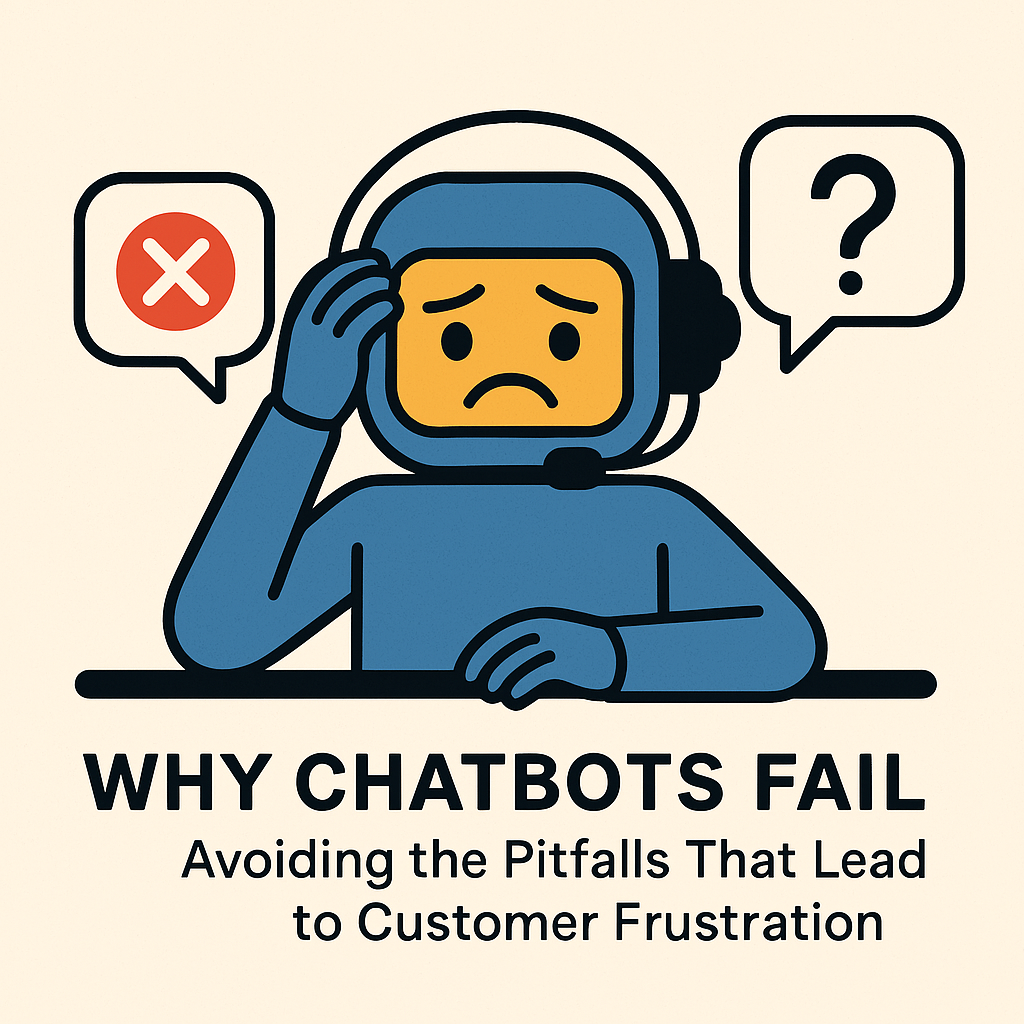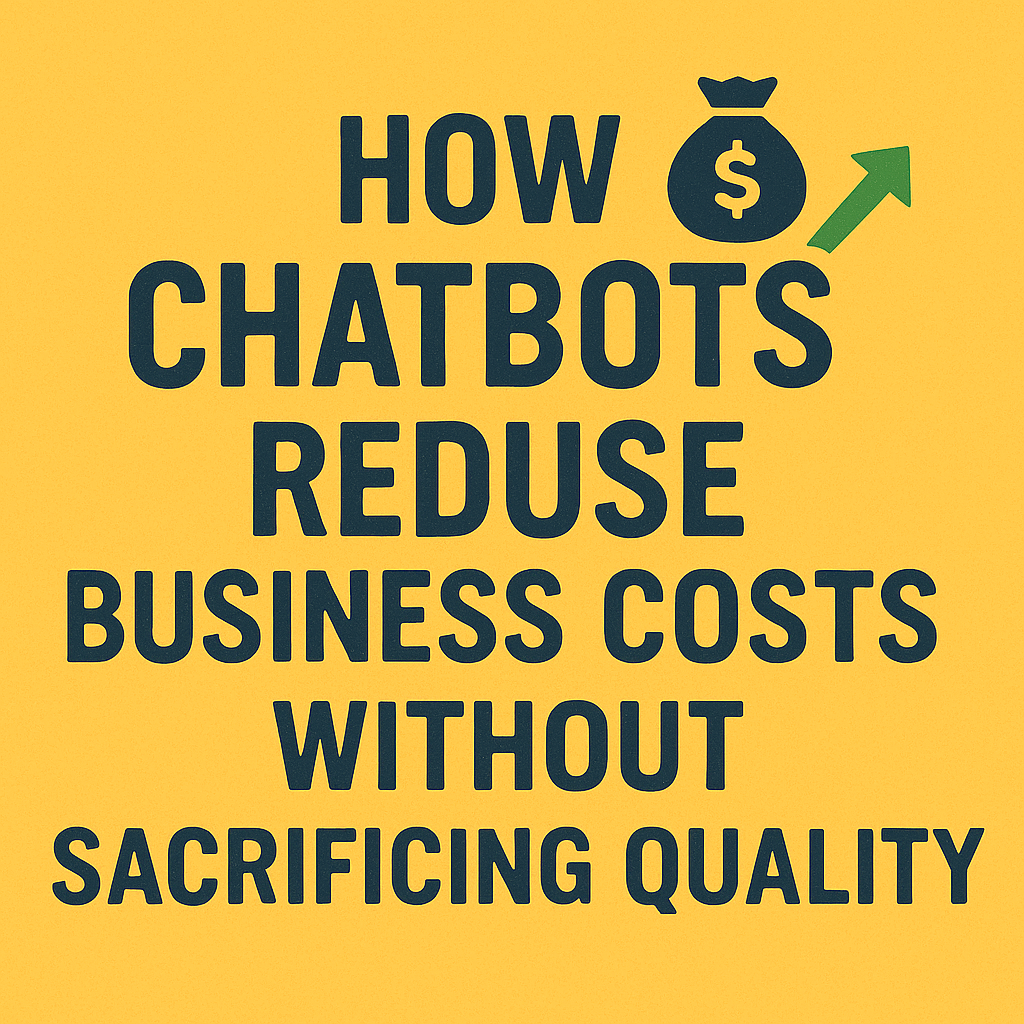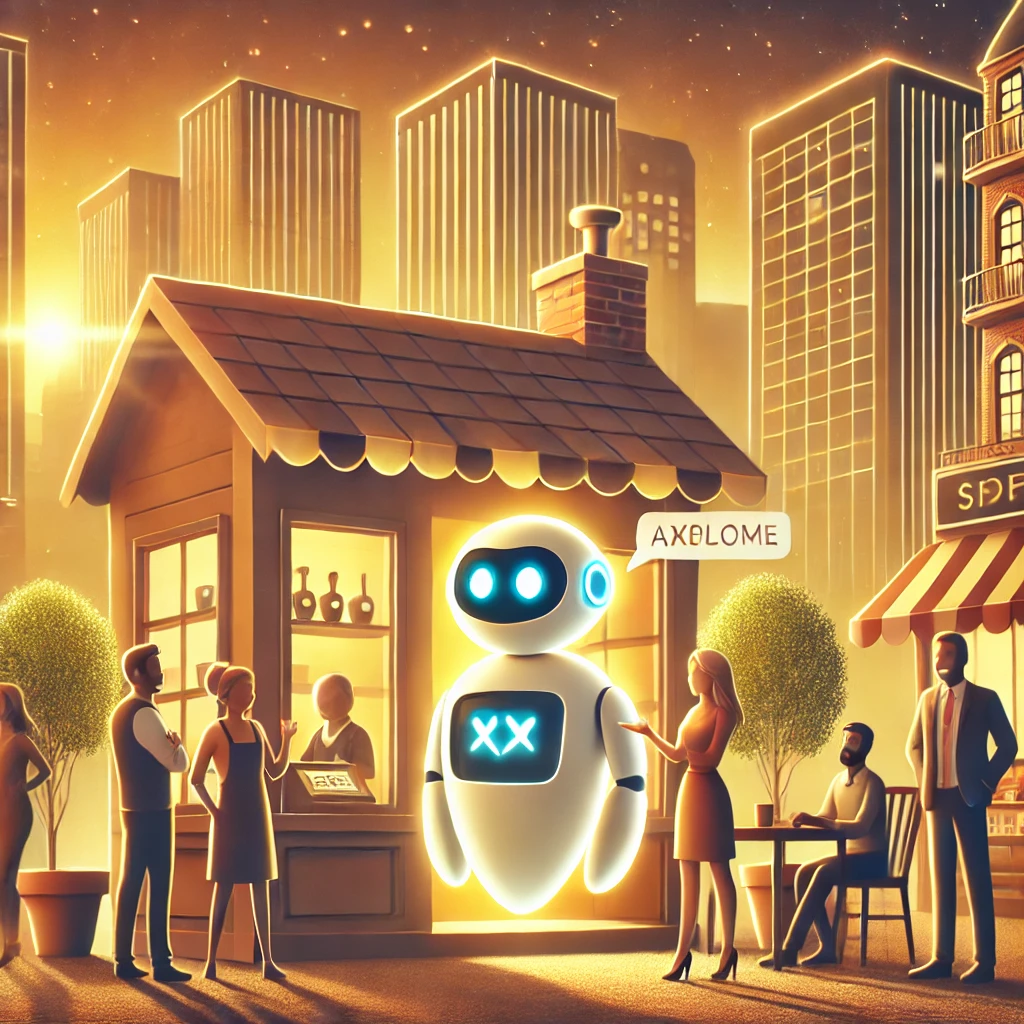Why Chatbots Fail - Avoiding the Pitfalls That Lead to Customer Frustration

You’ve probably had the experience: You visit a website looking for help, and a friendly chat bubble pops up. “Hi there! How can I help you today?” Hopeful for quick assistance, you type your question, only to receive a response that has nothing to do with what you asked. Three more attempts later, you’re looking for the “talk to a human” option, if you haven’t already closed the tab in frustration.
This scenario plays out millions of times daily across the web. Despite the promise of improved customer service and operational efficiency, many chatbot implementations fail to deliver, leaving customers frustrated and businesses questioning their investment.
The Hidden Costs of Chatbot Failure
A poorly implemented chatbot doesn’t just fail to solve problems—it actively creates new ones:
- Damaged customer relationships: 73% of customers say they won’t return to a business after a poor chatbot experience
- Wasted internal resources: Teams spend hours managing and fixing broken chatbot implementations
- Lost sales opportunities: When potential customers can’t get answers, they go to competitors who make it easier to do business
- Brand reputation damage: In the age of social media, poor experiences spread quickly
The irony? Many businesses implement chatbots to improve customer experience and reduce costs, only to discover they’ve achieved the opposite.
How to Spot a Bad Chatbot Before Your Customers Do
Bad chatbots share common characteristics that you can identify before they damage your customer relationships:
1. The “I Don’t Understand” Loop
The chatbot repeatedly responds with variations of “I don’t understand” or “I can’t help with that” to straightforward questions within your business domain. When a chatbot can only handle a narrow set of precisely-worded queries, it’s not ready for customer interactions.
2. The Deflection Machine
Rather than providing answers, the chatbot constantly tries to redirect users to FAQs, contact forms, or phone numbers. While escalation paths are important, a chatbot that immediately tries to hand off conversations isn’t serving its purpose.
3. The False Positive
Perhaps most frustrating is the chatbot that confidently provides incorrect information. This gives customers the impression that your business doesn’t know what it’s talking about—or worse, doesn’t care enough to provide accurate information.
4. The Dead End
The conversation reaches a point where neither the chatbot nor the customer knows how to proceed. There’s no clear path to resolution, no escalation option, and no way to start over.
5. The Time Waster
The chatbot asks for information it should already know or that isn’t relevant to solving the problem. Customers quickly recognize when they’re providing information that isn’t being used effectively.
Why Do Chatbots Fail? The Root Causes
Understanding why chatbots fail is the first step toward building one that succeeds:
Unrealistic Expectations
Many businesses expect AI capabilities that simply don’t exist at their price point. Current technologies have limitations that should inform implementation decisions. When stakeholders expect a chatbot to immediately handle every possible customer inquiry as well as a seasoned employee would, disappointment is inevitable.
Insufficient Planning and Strategy
Successful chatbots begin with clear objectives and use cases. Without defining what success looks like and which specific problems the chatbot should solve, implementations drift into vague territory where they try to do everything and end up doing nothing well.
Limited Training Data
A chatbot can only be as good as the information it’s given. Many businesses fail to provide enough quality examples of customer interactions, leaving their chatbots ill-prepared for real-world conversations. Think of it like hiring an employee and providing a one-page document about your company—they simply won’t have enough context to succeed.
Poor Natural Language Understanding
The technology that helps chatbots understand human language varies dramatically in quality. Budget solutions often struggle with:
- Typos and misspellings
- Industry-specific terminology
- Multiple questions in one message
- Conversational context
Lack of Continuous Improvement
The most successful chatbots improve over time through continuous training and refinement. Many businesses make the mistake of treating chatbot implementation as a one-time project rather than an ongoing program.
Absence of Human Backup
Even the best chatbots need human backup for complex issues. Without a seamless handoff process to human agents, customers get stuck in frustrating loops with no resolution path.
How to Fix a Failing Chatbot
If you’re already dealing with a chatbot that’s not performing, here are steps to get back on track:
1. Go Back to Basics: Define Success
Before making technical changes, revisit your objectives. What specific problems should your chatbot solve? How will you measure success? Getting clarity on these questions provides direction for improvements.
2. Analyze Conversation Data
Review actual customer interactions to identify where breakdowns occur. Look for patterns in:
- Common questions the chatbot fails to answer
- Points in conversations where customers abandon the interaction
- Instances where customers explicitly express frustration
This data reveals specific areas for improvement rather than guessing what might be wrong.
3. Focus on High-Value Use Cases
Rather than trying to fix everything at once, prioritize the most common and impactful customer inquiries. Perfect a few critical conversation flows before expanding to edge cases.
4. Implement a Clear Escalation Path
Ensure customers can easily reach a human when needed. This safety net builds trust and prevents the frustration of feeling trapped in a conversation with no resolution.
5. Establish an Ongoing Improvement Process
Set up regular reviews of chatbot performance with a team responsible for making continuous improvements. The most successful implementations treat the chatbot as a product that evolves rather than a project that ends.
Prevention: Setting Your Chatbot Up for Success
If you’re just starting your chatbot journey, here’s how to avoid the common pitfalls:
1. Start With a Focused Scope
Begin with a narrow set of well-defined use cases rather than attempting to automate all customer interactions at once. Success in specific areas builds confidence and provides learnings for expansion.
2. Invest in Quality Training Data
Gather real examples of customer questions and the ideal responses. The more varied and comprehensive this training data, the better your chatbot will perform in real-world situations.
3. Choose the Right Technology Partner
Not all chatbot platforms are created equal. Evaluate potential technology partners based on:
- Quality of natural language understanding
- Ease of training and improvement
- Integration capabilities with your existing systems
- Support for seamless human handoff
- Analytics and reporting features
4. Set Realistic Expectations Internally
Ensure all stakeholders understand what the chatbot can and cannot do, especially in its early stages. Managing these expectations prevents disappointment and builds support for ongoing improvement.
5. Design for Conversation, Not Transactions
Successful chatbots feel conversational rather than mechanical. Consider tone, personality, and how the chatbot handles unexpected responses. A natural, helpful tone goes a long way toward customer acceptance.
6. Plan for Continuous Improvement
Budget for ongoing training and refinement. The most successful chatbots improve dramatically over time through regular updates based on actual customer interactions.
The True Value of Getting It Right
When implemented correctly, chatbots deliver remarkable value:
- 24/7 availability that meets customers where and when they need help
- Consistent information that doesn’t vary based on which agent responds
- Scalable support that handles volume spikes without added costs
- Valuable insights into customer needs and pain points
- Freed human resources that can focus on complex, high-value interactions
The difference between success and failure isn’t just technology—it’s strategy, execution, and commitment to ongoing improvement.
Making the Right Choice for Your Business
As you consider implementing or improving a chatbot for your business, remember that the upfront investment in doing it right pays dividends in customer satisfaction and operational efficiency. Cutting corners may save money initially but often leads to costlier fixes and damaged customer relationships down the road.
The most successful businesses approach chatbot implementation as a strategic initiative tied to specific business outcomes rather than a technical project to be completed as cheaply as possible. They invest in quality technology, thoughtful design, and ongoing improvement—and they reap the rewards in customer loyalty and operational efficiency.
In the end, the question isn’t whether your business can afford a quality chatbot implementation; it’s whether you can afford the consequences of getting it wrong.





